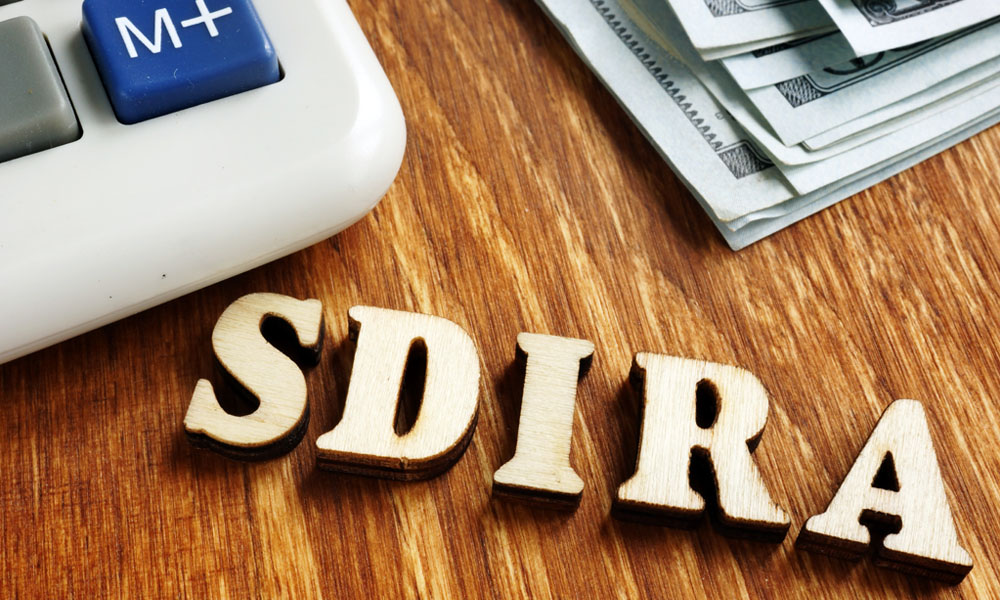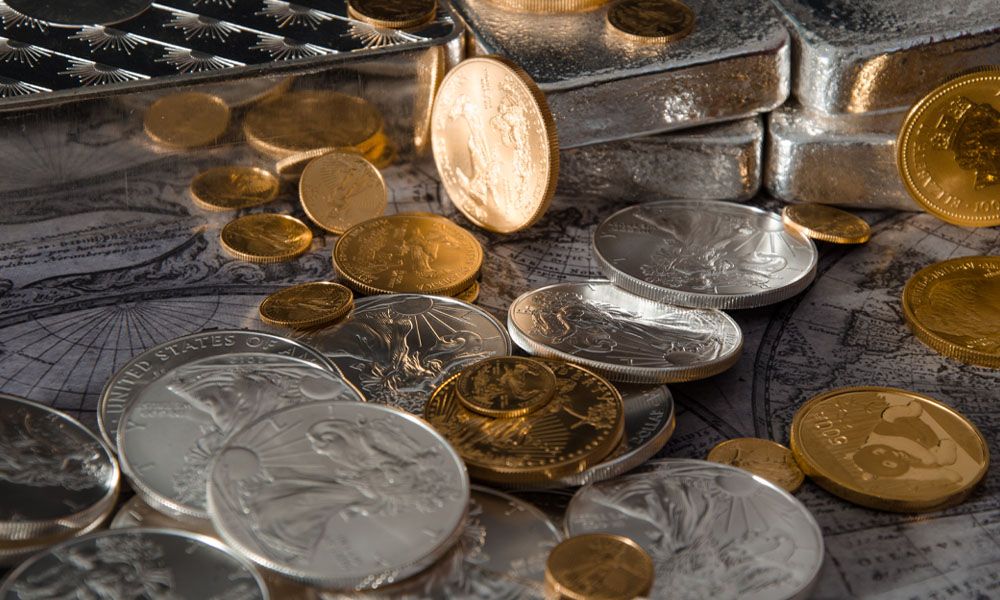In 2025, more and more people are seeking ways to safeguard and protect their retirement savings from economic uncertainty, market volatility, and the ravages of inflation. While traditional investment vehicles like stocks and bonds still have their place, there's a growing interest in diversifying with tangible assets like gold and silver bullion.
Gold and silver have been trusted forms of wealth for millennia, and today, they can play a crucial role in your retirement strategy through a physical Gold and Silver IRA. But how exactly do you go about opening one? In this post, we'll walk you through everything you need to know, from understanding what a Gold and Silver IRA is to the steps involved in setting one up. Let's dive in and explore how you can add a layer of security and stability to your financial portfolio!
Understanding a Gold and Silver IRA
So, what exactly is a Gold and Silver IRA?
Simply put, it's an Individual Retirement Account (IRA) that allows you to hold physical precious metals, such as gold and silver, as part of your retirement portfolio. Unlike a standard IRA, which typically includes stocks, bonds, and mutual funds, a gold and silver IRA lets you invest in tangible assets—something you can actually hold in your hand!
This type of IRA falls under the category of Self-Directed IRAs (SDIRA), meaning it gives you more control over what you can invest in, such as precious metals or real estate assets. However, with that control comes a certain responsibility, particularly in ensuring that your investments comply with Internal Revenue Service (IRS) regulations.

Benefits of a Precious Metals IRA
Why would someone choose to add gold and silver to their IRA? The reasons are compelling:
- Protection Against Inflation and Economic Downturns: Gold and silver have long been considered safe havens in times of economic uncertainty. Unlike paper currency or stocks, their value tends to hold steady or even increase during market downturns and inflationary periods.
- Diversification: A well-balanced portfolio is key to minimizing risk. By adding physical precious metals to your IRA, you're not putting all your eggs in one basket. This diversification can help protect your retirement savings from market volatility.
- Tangible Asset Ownership: There's something uniquely reassuring about owning physical gold and silver. Unlike stocks or bonds, which are essentially paper assets, precious metals are tangible and have intrinsic value. Knowing that your investment is something you can actually see and touch provides serious peace of mind.
Who Can Open a Gold and Silver IRA?
Before diving into the world of precious metals, it's essential to know if you're eligible to open a Gold and Silver IRA. The good news is that most people who qualify for a traditional IRA can also open a precious metals IRA. However, there are a few things to keep in mind:
- Contribution Limits and Income Considerations: Just like with a traditional IRA, there are contribution and income limits to consider. In 2025, if you are under age 50, you may only contribute $7,000 to an IRA. In 2025, total contributions up to $8,000 are allowed for anyone over 50 years of age. Your contribution eligibility may also depend on your income level, particularly if you're looking at a Roth IRA version of a precious metals account.
- Types of Retirement Accounts That Can Be Rolled Over: If you already have a retirement account, such as a 401(k), 403(b), or another type of traditional IRA, you might be able to roll those funds over into a Gold and Silver IRA. This can be a strategic move if you want to diversify your retirement savings with physical assets. However, following the proper procedures is crucial to avoid any penalties or taxes. The involvement of your tax planner is key!

IRS Regulations and Restrictions
When it comes to Gold and Silver IRAs, the IRS has specific rules you need to follow:
- Approved Types of Precious Metals: Not all gold and silver are eligible for inclusion in an IRA. The IRS has strict guidelines on the types of precious metals that qualify. Generally, gold must have a purity level of at least 99.5%, and silver must be at least 99.9% pure. Popular options include gold and silver bars or coins that meet these standards, such as American Gold Eagles, American Gold Buffalos, Canadian Gold Maple Leafs, and American Silver Eagles.
- Storage Regulations: One of the unique aspects of a Gold and Silver IRA is the requirement for physical storage. The IRS mandates that your precious metals must be stored in an approved depository rather than in your home or a personal safe. These depositories are secure facilities specifically designed to protect your assets. You'll also need to choose between segregated storage (where your metals are kept separate from others) and non-segregated storage (where your metals are stored together or commingled with others' assets).
Steps to Open a Gold and Silver IRA
Step 1: Choose a Custodian
The first step in opening a Gold and Silver IRA is selecting a custodian. A custodian is a financial institution responsible for managing your Gold and Silver IRA's recordkeeping, ensuring that it complies with IRS regulations, and handling administrative functions when you purchase and store your precious metals.
When choosing a custodian, it's essential to do your research. Look for a custodian who specializes in precious metals IRAs and has a solid reputation in the industry. Key factors to consider include:
- Fees: Custodians typically charge fees for account setup, storage, and annual maintenance. Make sure you understand the fee structure and how it compares to other custodians.
- Experience: How long has the custodian been in business? Do they have a track record of successfully managing Gold and Silver IRAs?
- Customer Service: A good custodian should provide excellent customer service, answering your questions promptly and helping you navigate the process smoothly.
Some well-known custodians that specialize in precious metals IRAs include companies like Equity Trust Company and New Direction Trust Company. It's important to compare your options and choose the custodian that best fits your needs.
Step 2: Fund Your IRA
Once you've selected a custodian, the next step is to fund your Gold and Silver IRA. There are a few ways you can do this:
- Contributions: If you're starting a new IRA, you can contribute funds directly, just like with a traditional IRA. Keep in mind that there are annual contribution limits set by the IRS.
- Transfers: If you already have an existing IRA, you might be able to transfer funds from one IRA to another without incurring any taxes or penalties. This process is straightforward; your selected custodian can help facilitate the transfer.
- Rollovers: If you have a 401(k) or another retirement account from a previous employer, you can roll those funds over into your new Gold and Silver IRA. Always remember to check with your tax preparer before making any retirement plan rollover.
Step 3: Arrange for Storage
The IRS requires that all precious metals held in a Gold and Silver IRA be stored in an approved depository. Your custodian will have a pre-approved list of depositories to select from. Here are some things to consider:
- Segregated vs. Non-Segregated Storage: With segregated storage, your metals are stored separately from other investors' assets. With non-segregated storage, your metals are stored together with those of other investors. Segregated storage is usually more expensive but provides additional peace of mind, knowing the metal you put in is the metal you eventually get out.
- Costs: Storage fees vary depending on the depository and whether you choose segregated storage, which is more costly, or non-segregated storage. Be sure to factor these costs into your overall investment strategy.
- Insurance: IRA approved depositories obtain insurance to protect your assets, but it's always a good idea to double-check what's covered and whether you may need additional insurance.
Step 4: Select Your Precious Metals
Now comes the exciting part—choosing the precious metals to include in your Gold and Silver IRA. Once your account is funded and you're ready to use those funds to make a purchase, reach out to PIMBEX Customer Service to lock in your order. You will use the PIMBEX order invoice to complete and submit the Direction of Investment (DOI) form to your custodian for processing.
When making your investment selection, it's helpful to consider the following:
- Gold vs. Silver: Do you want to invest more in gold, silver, or a combination of both? Gold is often seen as a more stable investment, while silver has the potential for greater price volatility—and potentially higher returns.
- Diversification Within Precious Metals: You might also consider diversifying within the metals category. For example, you could invest in a mix of gold bullion, investment-grade silver coins, and bars to spread your risk.
- Market Trends: Monitor current market trends and economic indicators. While no one can predict the future, understanding the market can help you make informed decisions about when to buy.
After the custodian processes payment, PIMBEX will ship the gold and silver directly to your selected depository. The depository receives and tests the material for authenticity, and then applies the receipt to your account. This addition will show up on future customer statements.

Ongoing Management and Considerations
Monitoring Your IRA
The work doesn't stop once your Gold and Silver IRA is set up, and your metals are securely stored. It's important to actively monitor your IRA to ensure it's performing in line with your retirement goals. Here's how:
- Track Performance: Regularly check the value of your precious metals, keeping an eye on market trends that might affect their worth. Your custodian will provide online tools and regular statements to help you track the performance of your IRA.
- Regular Reviews: Schedule periodic reviews of your IRA to evaluate its performance and make any necessary adjustments. Consider consulting with your financial advisor or tax preparer, who can ensure your precious metals strategy remains aligned with your long-term goals.
Required Minimum Distributions (RMDs)
As with other types of IRAs, you'll eventually need to start taking Required Minimum Distributions (RMDs) from your Gold and Silver IRA. Here's what you need to know:
- When RMDs Start: You're required to start taking RMDs from your IRA once you reach age 73 (as of 2023). This applies to all types of IRAs, including those holding precious metals.
- How RMDs Work: Unlike traditional IRAs, where RMDs are taken in cash payments, you have the option to receive your RMDs "in kind" in the form of physical metals. This means you can take delivery of your physical gold and silver holdings directly to your home.
- Planning for RMDs: It's important to plan ahead for RMDs, as failing to take them on time can result in significant tax penalties. Work with your custodian to ensure you're meeting your RMD obligations.

Conclusion
Opening a Gold and Silver IRA is a powerful way to diversify your retirement portfolio and protect your savings against inflation, currency devaluation, and economic instability. By following the steps outlined in this guide—choosing a custodian, funding your IRA, arranging for secure storage, and selecting your precious metals—you can take control of your financial future with the stability that gold and silver provide.
Remember, managing a Gold and Silver IRA is an ongoing process. To make the most of your investment, regularly monitor your account, plan for required distributions, and stay informed about gold and silver market trends. With careful planning, you can enjoy the peace of mind that comes from knowing your retirement savings are protected by these time-tested assets.
If you have any questions about the next steps, please call our toll-free line (888) 892-9363 for a free consultation today!
